THE BEST TIP I CAN PASS ON TO BEGINNER WRITERS:
 Writing a novel is a huge undertaking. There are many things that go into the writing of a fiction story. The best tip I can pass on is this: Break everything down into little bite-sized pieces. By doing this, you can reduce a huge project down to do-able portions that can be done whether you have 2 hours a week to write or two full days! It only requires a little planning and organization.
Writing a novel is a huge undertaking. There are many things that go into the writing of a fiction story. The best tip I can pass on is this: Break everything down into little bite-sized pieces. By doing this, you can reduce a huge project down to do-able portions that can be done whether you have 2 hours a week to write or two full days! It only requires a little planning and organization.
ALL NOVELS REQUIRE SOME SUSPENSE:
Regardless of what type of novel you choose to write, all stories require at least a semblance of suspense. Suspense is what hooks the reader into the story, and it is what pulls the reader along the story and keeps them reading. Suspense creates a question the reader desires an answer to. The greater the suspense, the more hooked the reader will be.
READING OTHER AUTHORS:
 It’s important to keep reading as your own journey as a writer continues. Each author has a different style and uses different storytelling techniques. The stories don’t even have to be great. You can learn from the good, the bad and the bland. Just analyzing what made a book bland is a great lesson in itself. Did the story need more action? Did the story get stuck somewhere?
It’s important to keep reading as your own journey as a writer continues. Each author has a different style and uses different storytelling techniques. The stories don’t even have to be great. You can learn from the good, the bad and the bland. Just analyzing what made a book bland is a great lesson in itself. Did the story need more action? Did the story get stuck somewhere?
When I read novels now, I can usually tell whether the author is a pantser or a plotter. If the story sags in the third section, I can tell the author got caught in part two of the three-act structure.
The books I read now are twice as enjoyable because I experience them as a reader but as an author too. I get to enjoy the story itself but also watch and learn the author’s storytelling techniques too.
WATCHING MOVIES FOR INSPIRATION:
When I am in the process of writing my own novels, I tend to read less because I’m reading and proofreading my own pages. During these times, I like to vegetate by getting lost in a movie. I watch movies specifically to learn from them. Believe me, you can learn a lot about the actual storytelling craft from watching movies. They can also be a source of inspiration for your own stories.
It took me almost a year to come up with my first story for a novel. One full year. I didn’t know where to start. I had ideas, but didn’t know how to brainstorm them into a potential story.
WHERE CAN DO YOU GET IDEAS FOR A FICTION STORY FROM?
Ideas for stories in the beginning will come from TV movies, Cinema movies  or other books you read. Reading other authors is crucial no matter where you are on the writing spectrum. However, when you’re new, you can learn a lot from watching mystery or crime noir movies. I like movies from the 1940s, 1950s, and 1960s. The movies in these decades didn’t have CGI and the directors had to use the stage to tell the story. They used wider shots and props to assist the storytelling. By watching these older movies, you can learn a lot regarding writing.
or other books you read. Reading other authors is crucial no matter where you are on the writing spectrum. However, when you’re new, you can learn a lot from watching mystery or crime noir movies. I like movies from the 1940s, 1950s, and 1960s. The movies in these decades didn’t have CGI and the directors had to use the stage to tell the story. They used wider shots and props to assist the storytelling. By watching these older movies, you can learn a lot regarding writing.
The movies of today show the location scenes once and then do close up shots of one character talking and then follow it up with another close-up shot of a character talking. There’s not that much to learn about storytelling from these movies. It’s a shame because the sets are absolutely gorgeous, especially in the fantasy movies.
To the left (or above) is a screenshot of the Wikipedia page that comes up when you search “1940 in film”. This will give you all of the films and a tiny synopsis of what the films are about. You can pick whatever decade appeals to you.
READ THE SYNOPSIS FOR THE MOVIE FIRST:
 It’s a good idea to read the synopsis before you view the movie. Knowing at least a basic outline of the story will allow you to absorb more as an author. If you go into the movie blindly, you will be “experiencing the movie” as a viewer only. By knowing ahead of time what story will be unfolding, it will allow you to watch specifically for certain scenes to unfold. You can watch what tools are used to move the story along.
It’s a good idea to read the synopsis before you view the movie. Knowing at least a basic outline of the story will allow you to absorb more as an author. If you go into the movie blindly, you will be “experiencing the movie” as a viewer only. By knowing ahead of time what story will be unfolding, it will allow you to watch specifically for certain scenes to unfold. You can watch what tools are used to move the story along.

For example: Notice in the scenes how much information is passing to the viewer by the setting. Besides the timeline of when the story is taking place, it often will give you shots of recognizable icons from certain cities. There are so many techniques you can learn from watching these older movies about all of the tools used to lay out the facts of the story and how suspense is created. Below is a list of things to watch for in stories:
- How does the movie show the location of the story? Do they use icons, or text on the screen? Do they use snippets of dialogue? Each movie you will learn different tricks for showing time and location.
- How does the story show either poverty or opulence?
- How does the movie present the premise? There will be at least dialogue about what the main character wants or needs. Notice how this is done.
- Notice where the suspense of the story starts. Even in non-mystery stories, there will be at least a thread of suspense. It might be suggested by a vision that one character and the viewer see and no one else does. Or it may be a little gossip that passes in a short conversation.
- Notice how the passage of time is handled. Is the passage of a few years spoken in dialogue or is it projected in some other way?
- Notice how the writers show the character’s weakness or fallen nature.
- Notice the change in locations in the story. This is often how the story is kept moving forward.
- Notice when the suspense gets stronger.
- Watch for how the writers will use lies to create a sense of worry or dread.
- For any twists in the story, notice how abrupt it happens. Also take the time to notice if this was foreshadowed in the beginning of the story. Readers love foreshadowing.
MY SUGGESTION FOR A MOVIE:
 If you are looking for a suggestion, I would suggest Rebecca for the first movie. This movie was directed by Alfred Hitchcock and it has a lot of gothic atmosphere. There is also a psychological plotline in this story so it is a goldmine for learning storytelling tools.
If you are looking for a suggestion, I would suggest Rebecca for the first movie. This movie was directed by Alfred Hitchcock and it has a lot of gothic atmosphere. There is also a psychological plotline in this story so it is a goldmine for learning storytelling tools.
Most of the synopses on Wikipedia give you an outline of the story but they don’t have spoilers in them. Sometimes I only read about six paragraphs on the really long ones because the purpose is only to know a little bit about what the story will be about so you can watch for how things are handled on film. You can easily translate any of these tools to novel writing.
GOTHIC MOVIES: Gothic movies are great at showing how to introduce fear and suspense into a story. They are also a great place to learn how to use the atmosphere and the location and backdrops to add to the suspense.
FILM NOIR: These movies are great to learn character development. Film Noir is usually about all fallen characters. In other words, they are all sinners, but some characters are bigger sinners than others. This is a great way to learn how to craft a fallen
LONG SERIES: These are great to learn about how the location and things in the room or backdrop help to relay the story. You can learn a lot about the passage of time, how flashbacks are handled, how to introduce new characters in preparation to take the story in a new direction. Miniseries like Downton Abbey and other miniseries are a great place to learn about what is going on.
MELODRAMA: Melodrama has fallen out of favor in recent times, but I personally think it needs a comeback. You can learn about melodrama from old world soap operas. I think the only one I can think of is Dallas. It’s on either Amazon Prime or somewhere else you can watch it. These types of shows are good for showing how to blend romance, cheating, and other emotional scenes into the story.
You don’t have to commit to watching the entire soap opera. You can learn a lot about storytelling tools by watching only a few shows.
Blow is a copy of the entire Brainwashing Sheet I referred to above. You can read the blog post about how to use it here.
And you can sign in to download your copy of the sheets below:

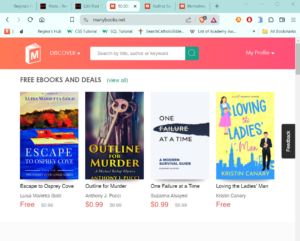





 This is the third and last segment to the Personalized Workflow Series. In this post, I'll share my best strategies to find, make and claw back time to make room to write that book you want to write.
This is the third and last segment to the Personalized Workflow Series. In this post, I'll share my best strategies to find, make and claw back time to make room to write that book you want to write. In order to find time, you need to analyze your life to find the wasted time and the dripping faucets of time. The last two segments of this series are all about looking at your duties and obligations from a bird's eye view in order to do a proper analyzation. By seeing everything on paper before your own eyes, you can more easily see where the time leaks and losses are happening.
In order to find time, you need to analyze your life to find the wasted time and the dripping faucets of time. The last two segments of this series are all about looking at your duties and obligations from a bird's eye view in order to do a proper analyzation. By seeing everything on paper before your own eyes, you can more easily see where the time leaks and losses are happening. Learn to break down projects into bite-sized pieces. Instead of scheduling yourself to write for five hours for two days in a row, try scheduling three two-hour writing sessions over the course of a week.
Learn to break down projects into bite-sized pieces. Instead of scheduling yourself to write for five hours for two days in a row, try scheduling three two-hour writing sessions over the course of a week. Multi-task Example 1: If you go to Church once a week, schedule a grocery pickup afterwards. Use Instacart to order the groceries and then simply swing by and pick up the groceries on your way home. That's a two to three hour savings right there.
Multi-task Example 1: If you go to Church once a week, schedule a grocery pickup afterwards. Use Instacart to order the groceries and then simply swing by and pick up the groceries on your way home. That's a two to three hour savings right there. Multi-Task Example 2: Schedule doctor appointments on the same day, one in the morning and one in the afternoon. Schedule research to be done in the waiting room in both doctor offices. Most doctor offices allow you to use at least a general Wi-Fi. Then add lunch with a friend between the visits and keep up friendships as part of your new lifestyle.
Multi-Task Example 2: Schedule doctor appointments on the same day, one in the morning and one in the afternoon. Schedule research to be done in the waiting room in both doctor offices. Most doctor offices allow you to use at least a general Wi-Fi. Then add lunch with a friend between the visits and keep up friendships as part of your new lifestyle. At the end of your day, when you're ready to sit back and relax, put in a load of laundry first. Set an alarm to put it into the dryer. Be sure to transfer it to the dryer and then you're done. If you have enough energy to fold and hang the clothing when done, great. Otherwise, the folding can go on to tomorrow's list of things to do. Just tumble dry the clothes for five minutes before folding. You have just found two more hours to write.
At the end of your day, when you're ready to sit back and relax, put in a load of laundry first. Set an alarm to put it into the dryer. Be sure to transfer it to the dryer and then you're done. If you have enough energy to fold and hang the clothing when done, great. Otherwise, the folding can go on to tomorrow's list of things to do. Just tumble dry the clothes for five minutes before folding. You have just found two more hours to write.
 Infants: If you have small babies, this announcement won't work, of course, but you can make good use of their nap time. That can be your time to write. Toddlers can be a handful and you may need to schedule your free time to write after their bedtime. If that is your only time, let your spouse know you want to set aside a few hours to write and you need his or her cooperation.
Infants: If you have small babies, this announcement won't work, of course, but you can make good use of their nap time. That can be your time to write. Toddlers can be a handful and you may need to schedule your free time to write after their bedtime. If that is your only time, let your spouse know you want to set aside a few hours to write and you need his or her cooperation. Clawing back time and energy from your job is a different strategy. This can only be done in some jobs. Realigning and redistributing your energy, however, can be done in any job or career. Let's talk about the differences below.
Clawing back time and energy from your job is a different strategy. This can only be done in some jobs. Realigning and redistributing your energy, however, can be done in any job or career. Let's talk about the differences below. If you have a great job but it's in a toxic environment, the amount of energy that you are expending psychically, mentally and emotionally is very high. Working with horrid people and/or in a toxic environment is very draining. A good job is better than a toxic career, especially if you have a goal to write or pursue a different occupation. So just be aware of this. You may want to employ some of the strategies for taking back time and energy from a dead-end job so you can gather your energies for other pursuits.
If you have a great job but it's in a toxic environment, the amount of energy that you are expending psychically, mentally and emotionally is very high. Working with horrid people and/or in a toxic environment is very draining. A good job is better than a toxic career, especially if you have a goal to write or pursue a different occupation. So just be aware of this. You may want to employ some of the strategies for taking back time and energy from a dead-end job so you can gather your energies for other pursuits. In the last installment, I described how to start your duties and obligations list with realistic times associated with each one. The list will prove itself over a week or so. Then you will be ready to expand on that list and make a series of workflows, templates, and procedure lists or diagrams. I have posted my own above to jog your memory as to where we left off.
In the last installment, I described how to start your duties and obligations list with realistic times associated with each one. The list will prove itself over a week or so. Then you will be ready to expand on that list and make a series of workflows, templates, and procedure lists or diagrams. I have posted my own above to jog your memory as to where we left off.
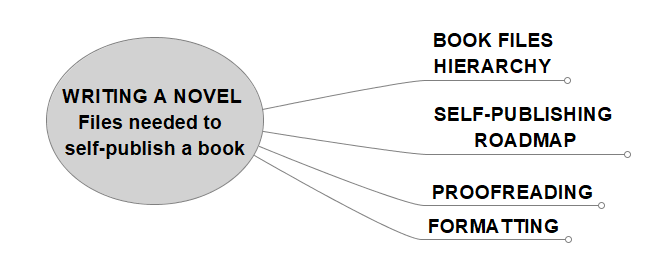




 There comes a time when any author or creator starts to accumulate a lot of documents. Manuscript files, first drafts, editor drafts, book cover files, social media images, how-to information, checklists, not to mention a work calendar of some kind. You can see that it can get overwhelming very quickly.
There comes a time when any author or creator starts to accumulate a lot of documents. Manuscript files, first drafts, editor drafts, book cover files, social media images, how-to information, checklists, not to mention a work calendar of some kind. You can see that it can get overwhelming very quickly.
 Most people are balancing a personal life and a work life. Thinking about what you need to accomplish at work without taking into account all that is required in your personal life is a recipe for disaster. Your goals will be unrealistic and it will be a setup to fail.. It’s important to plan around realistic personal and business goals.
Most people are balancing a personal life and a work life. Thinking about what you need to accomplish at work without taking into account all that is required in your personal life is a recipe for disaster. Your goals will be unrealistic and it will be a setup to fail.. It’s important to plan around realistic personal and business goals. Make a list of what a week in your life looks like. For me, I write novels, do book marketing, write blog posts and make videos (for marketing reasons as well as sharing my experience and knowledge with others).
Make a list of what a week in your life looks like. For me, I write novels, do book marketing, write blog posts and make videos (for marketing reasons as well as sharing my experience and knowledge with others).
 Here’s a personal example: To write, sit in corner of my bedroom in a chair, with my laptop, with a table set up next to it. I like to drink coffee when I write, so I make sure I have a pot ready and on hand. I also place a pad and pen on the table so I can down any new names I choose during the writing process. I write in Scrivener which is loaded onto my laptop, so that’s all I need for the entire writing session. By recreating your perfect environment you can design a setup or gathering list so you won’t keep interrupting yourself with forgotten items.
Here’s a personal example: To write, sit in corner of my bedroom in a chair, with my laptop, with a table set up next to it. I like to drink coffee when I write, so I make sure I have a pot ready and on hand. I also place a pad and pen on the table so I can down any new names I choose during the writing process. I write in Scrivener which is loaded onto my laptop, so that’s all I need for the entire writing session. By recreating your perfect environment you can design a setup or gathering list so you won’t keep interrupting yourself with forgotten items. In the next installment of this series, I’ll talk about getting more efficient. How to rid yourself and your life of time eaters, energy zappers, and other dead-end roads to nothing but time loss with zero accomplishments.
In the next installment of this series, I’ll talk about getting more efficient. How to rid yourself and your life of time eaters, energy zappers, and other dead-end roads to nothing but time loss with zero accomplishments.
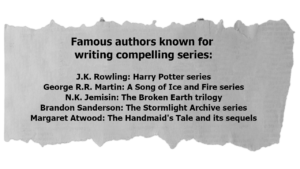 I found out later that more experienced authors even suggested that newer authors consider writing in series because it's easier to market the books. But my venture into writing book series was a happy accident.
I found out later that more experienced authors even suggested that newer authors consider writing in series because it's easier to market the books. But my venture into writing book series was a happy accident.

 I use broad-stroke character arc for the main characters that extends over all the books in the series. Each individual book, however, the character grows and changes a little bit. So each book contains its own arc, but there is a longer series arc for the main characters. It helps to know this before you start writing the series.
I use broad-stroke character arc for the main characters that extends over all the books in the series. Each individual book, however, the character grows and changes a little bit. So each book contains its own arc, but there is a longer series arc for the main characters. It helps to know this before you start writing the series.
 This could be a person who works full time, lives alone, or has a few kids and there is just not enough extra money around to fund all the things necessary to do when self-publishing a book. Not to worry. There are a few choices for you.
This could be a person who works full time, lives alone, or has a few kids and there is just not enough extra money around to fund all the things necessary to do when self-publishing a book. Not to worry. There are a few choices for you. A Beta Reader is someone who reads the book to give you feedback as to whether people will even like the story. A beta reader knows they are reading a book that is not ready to be released. They are aware or should be made aware that they will be asked for feedback as part of the final crafting of the book process.
A Beta Reader is someone who reads the book to give you feedback as to whether people will even like the story. A beta reader knows they are reading a book that is not ready to be released. They are aware or should be made aware that they will be asked for feedback as part of the final crafting of the book process. I chose to use Bookfunnel or SiteOrigin to release my ARC copies so that I could get the readers' emails to be able to contact them with a gentle reminder to review the book when it was released. Sounds innocent enough, right?
I chose to use Bookfunnel or SiteOrigin to release my ARC copies so that I could get the readers' emails to be able to contact them with a gentle reminder to review the book when it was released. Sounds innocent enough, right? I decided to go to Fiverr.com and hire a beta reader for $80.00. Go to Fiverr.com and type in "Beta Reader" in the search box. Look specifically for those who have done it a few times and have a 4 to 5 star rating. It's that easy.
I decided to go to Fiverr.com and hire a beta reader for $80.00. Go to Fiverr.com and type in "Beta Reader" in the search box. Look specifically for those who have done it a few times and have a 4 to 5 star rating. It's that easy.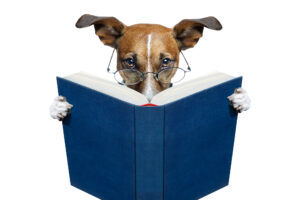 I will continue to request ARC readers and I include a questionnaire in the back of the ARC copies. Several readers do take the time to fill them out for me. It's so valuable. Each one has a different take on things.
I will continue to request ARC readers and I include a questionnaire in the back of the ARC copies. Several readers do take the time to fill them out for me. It's so valuable. Each one has a different take on things. After release, I only send one gentle-reminder email asking for a review after the book is released. Not everyone posts a review, but that's okay. If I get a few, again, I'm thankful. If they are members of my newsletter list, I usually put an announcement that the book has been released and this serves as a second gentle reminder.
After release, I only send one gentle-reminder email asking for a review after the book is released. Not everyone posts a review, but that's okay. If I get a few, again, I'm thankful. If they are members of my newsletter list, I usually put an announcement that the book has been released and this serves as a second gentle reminder. The take away is -- at least in my humble opinion -- you don't need a whole team of 10 or 20 people to release a book. If you have one beta reader, a professional editor that you trust, and get feedback questionnaires from a few readers, that's enough. After all, at the end of the day, some people will love your work and some may hate it. You're writing for your own readership -- not for those people who don't like your work.
The take away is -- at least in my humble opinion -- you don't need a whole team of 10 or 20 people to release a book. If you have one beta reader, a professional editor that you trust, and get feedback questionnaires from a few readers, that's enough. After all, at the end of the day, some people will love your work and some may hate it. You're writing for your own readership -- not for those people who don't like your work. The most important lesson I ever learned about Beta Readers and ARC readers -- in releasing a book in general -- is that it takes time. I need at least eight weeks to do a full ARC campaign, and two weeks for a beta extra for the beta readers and editor. When I was new, I had no idea of needing to do so many things before release.
The most important lesson I ever learned about Beta Readers and ARC readers -- in releasing a book in general -- is that it takes time. I need at least eight weeks to do a full ARC campaign, and two weeks for a beta extra for the beta readers and editor. When I was new, I had no idea of needing to do so many things before release.

 When I first decided to write a novel, it took me one full year (I’m not kidding!) to even come up with a crime. Today, using these methods I’m about to reveal, it only takes me two to three days to think up three or four mystery scenarios.
When I first decided to write a novel, it took me one full year (I’m not kidding!) to even come up with a crime. Today, using these methods I’m about to reveal, it only takes me two to three days to think up three or four mystery scenarios.
 Let’s talk about how to use this work sheet. Choose a crime or mystery from the list below and make up a potential perpetrator. Don’t waste time on what he or she looks like. Then start asking the following questions:
Let’s talk about how to use this work sheet. Choose a crime or mystery from the list below and make up a potential perpetrator. Don’t waste time on what he or she looks like. Then start asking the following questions: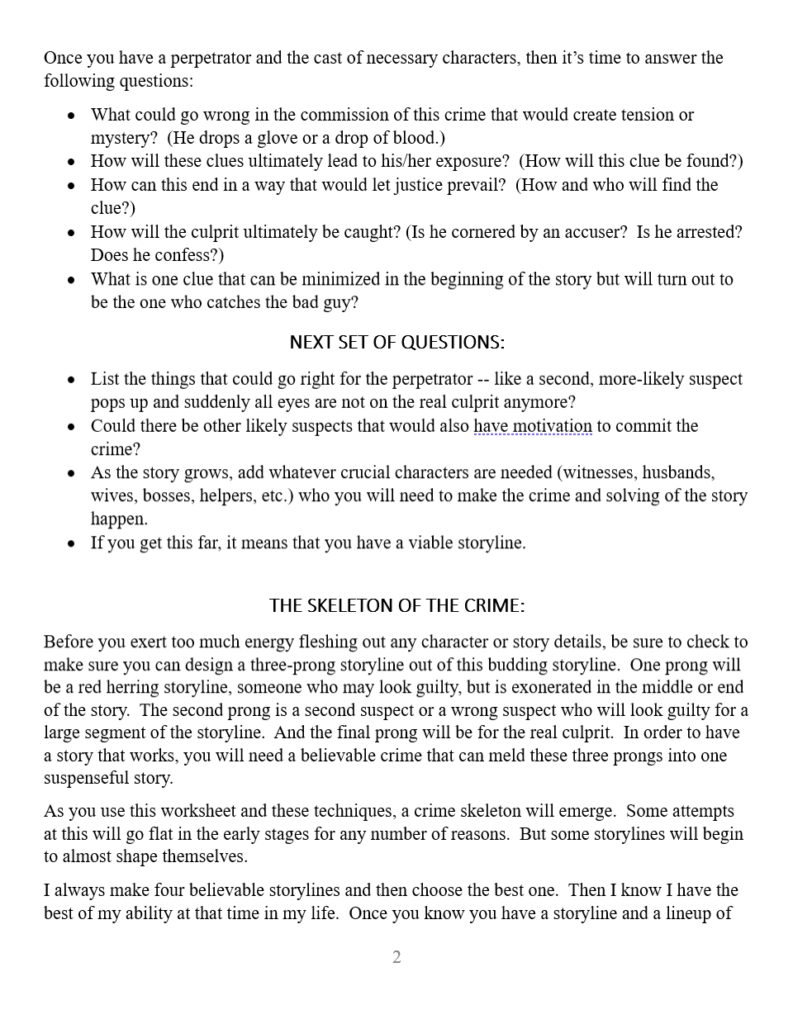 Once you have a perpetrator and the cast of necessary characters, then it’s time to answer the following questions:
Once you have a perpetrator and the cast of necessary characters, then it’s time to answer the following questions: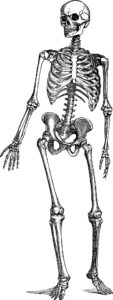 Before you exert too much energy fleshing out any character or story details, be sure to check to make sure you can design a three-prong storyline out of this budding storyline. One prong will be a red herring storyline, someone who may look guilty, but is exonerated in the middle or end of the story. The second prong is a second suspect or a wrong suspect who will look guilty for a large segment of the storyline. And the final prong will be for the real culprit. In order to have a story that works, you will need a believable crime that can meld these three prongs into one suspenseful story.
Before you exert too much energy fleshing out any character or story details, be sure to check to make sure you can design a three-prong storyline out of this budding storyline. One prong will be a red herring storyline, someone who may look guilty, but is exonerated in the middle or end of the story. The second prong is a second suspect or a wrong suspect who will look guilty for a large segment of the storyline. And the final prong will be for the real culprit. In order to have a story that works, you will need a believable crime that can meld these three prongs into one suspenseful story. Now that you have a generic marketing calendar, it's time to assemble your toolbox. These are the things you will want to have close by when it's time to dedicate an hour or two to marketing.
Now that you have a generic marketing calendar, it's time to assemble your toolbox. These are the things you will want to have close by when it's time to dedicate an hour or two to marketing.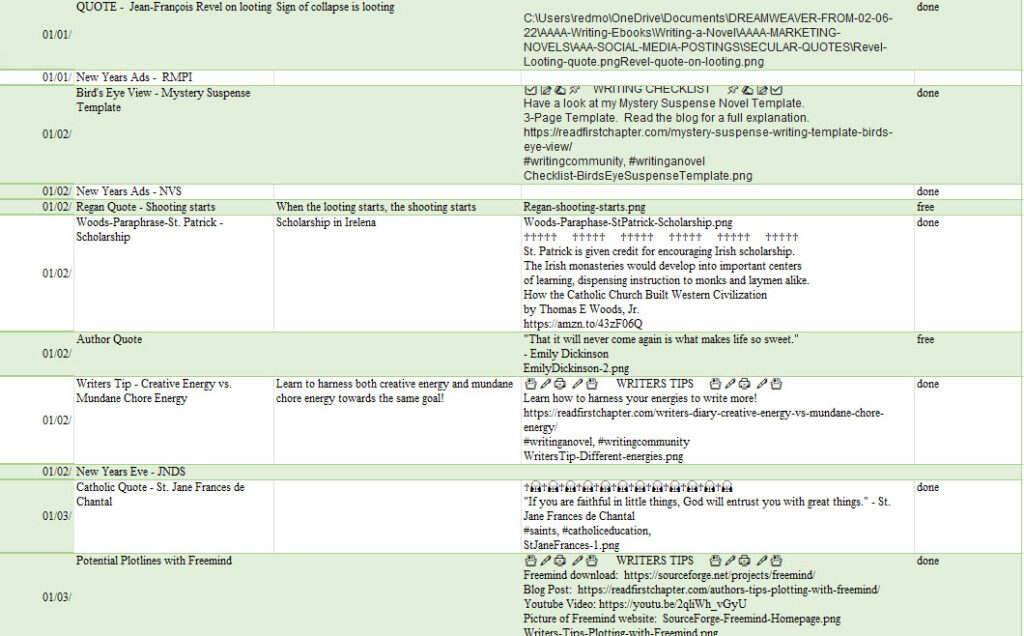
 Along with the 72 dpi book cover, you will need short blurbs about your book or books. Starting at about 150 words, keep whittling the blurb down until you have several blurbs with the last one being about one sentence (for Amazon ads).
Along with the 72 dpi book cover, you will need short blurbs about your book or books. Starting at about 150 words, keep whittling the blurb down until you have several blurbs with the last one being about one sentence (for Amazon ads). Most younger people know what hashtags are. If you're a boomer like me (hee hee), you may need to brush up on what hashtags are. Go to YouTube and search out videos explaining hashtags. Someone will explain them to you.
Most younger people know what hashtags are. If you're a boomer like me (hee hee), you may need to brush up on what hashtags are. Go to YouTube and search out videos explaining hashtags. Someone will explain them to you.
